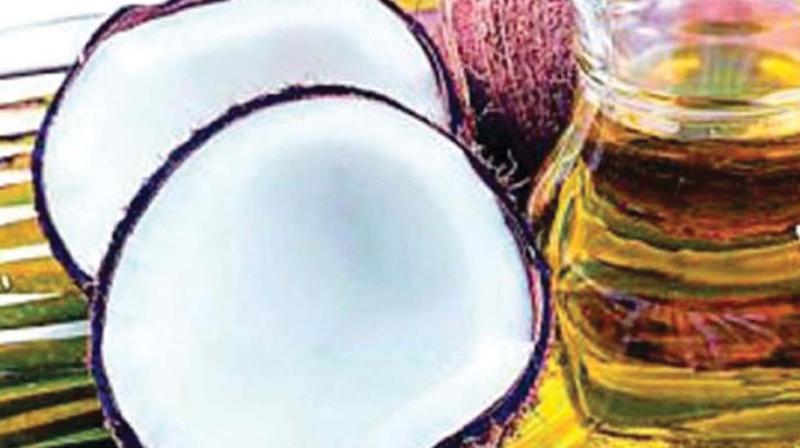Coconut oil adulterators beware
KU researcher develops technique to detect adulteration.

Thiruvananthapuram: A technique to detect the presence of one percent paraffin oil in coconut oil has been developed by Vimal Raj, a research scholar in the department of optoelectronics, University of Kerala. The minor quantities of such adulterants cannot be detected easily through physical appearance or smell.
The new technique is a rapid, laser-based, non- destructive and sensitive spectroscopic process.
The coconut oil samples with traceable amounts of paraffin oil could be characterised using Fourier Transform Infrared, Near Infrared, UV-visible, Nuclear Magnetic Resonance and Photoluminescence spectroscopic techniques. The variations in the optical emission from the samples on photoexcitation are analysed through power spectrum and International Commission on Illumination(CIE) plots. The ratios of the peaks in the photoluminescence spectra could indicate the quantification of paraffin oil in coconut oil and the regression equation set could provide us the results of adulterants.
The experiments were conducted under the guidance of Dr. S. Sankararaman, head, department of nanoscience and nanotechnology, University of Kerala. The laser-assisted thermal lens technique has also been employed successfully in tracing the presence of paraffin oil in coconut oil. The findings were published in the reputed international peer-reviewed journals - Applied Physics B and The European Physical Journal Plus.
The rising coconut and copra prices are a concern for coconut oil companies and many of them bring out adulterated oil to survive in the market. The above techniques could detect such oil blending.
The adulteration of coconut oil with paraffin oil is a major health threat to Keralites who use coconut oil for divergent purposes.
Paraffin oil is a mineral oil belonging to group 1 carcinogen, according to the International Agency for Research on Cancer.

